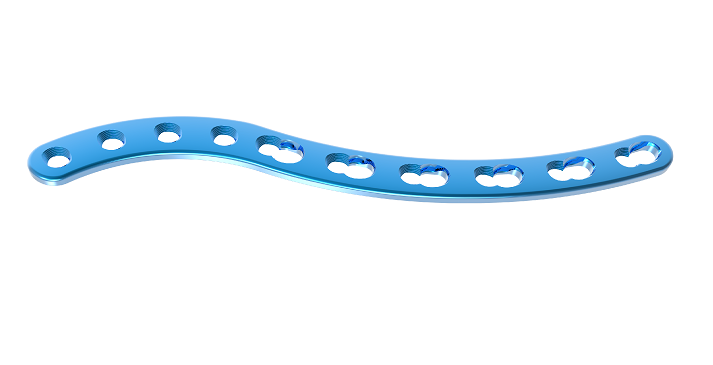The clavicle locking plate is a surgical implant specifically designed to stabilize clavicle fractures. Unlike traditional plates, the screws of the locking plate can be locked onto the plate, thereby enhancing stability and better securing the fractured bone fragments. This innovative design reduces the risk of screw loosening and provides a more stable fixation effect, which is particularly beneficial in the dynamic environment of the shoulder. The surgical procedure for implanting the clavicle locking plate usually involves open reduction and internal fixation (ORIF).
The design principles of the Clavicle LCP include the following:
Anatomic Contour: The plate is designed to closely match the shape of the clavicle bone to ensure optimal fit and stability.
Locking Compression Screw Holes: The plate contains specially designed screw holes, which allow for the use of locking screws. These screws can provide both compression and angular stability, promoting bone healing.
Multiple Length Options: Orthopedic Clavicle Locking Plates are available in different lengths to accommodate variations in patient anatomy and fracture location.
Low-profile Design: The plate has a low-profile design to minimize irritation and discomfort for the patient.
Comb-hole Design: Some Clavicle LCP plates have comb-hole design options, which allow for additional screw fixation at the ends of the plate, enhancing stability.
Titanium Alloy: Anterior Clavicle Locking Plate are typically made of titanium alloy, which provides strength, durability, and biocompatibility.
It is important to note that implant design and specific features may vary among different manufacturers and models. Surgeons evaluate individual patient circumstances and select the most appropriate implant based on considerations such as fracture type, patient anatomy, stability requirements, and surgical technique.
Post time: Jul-10-2025

